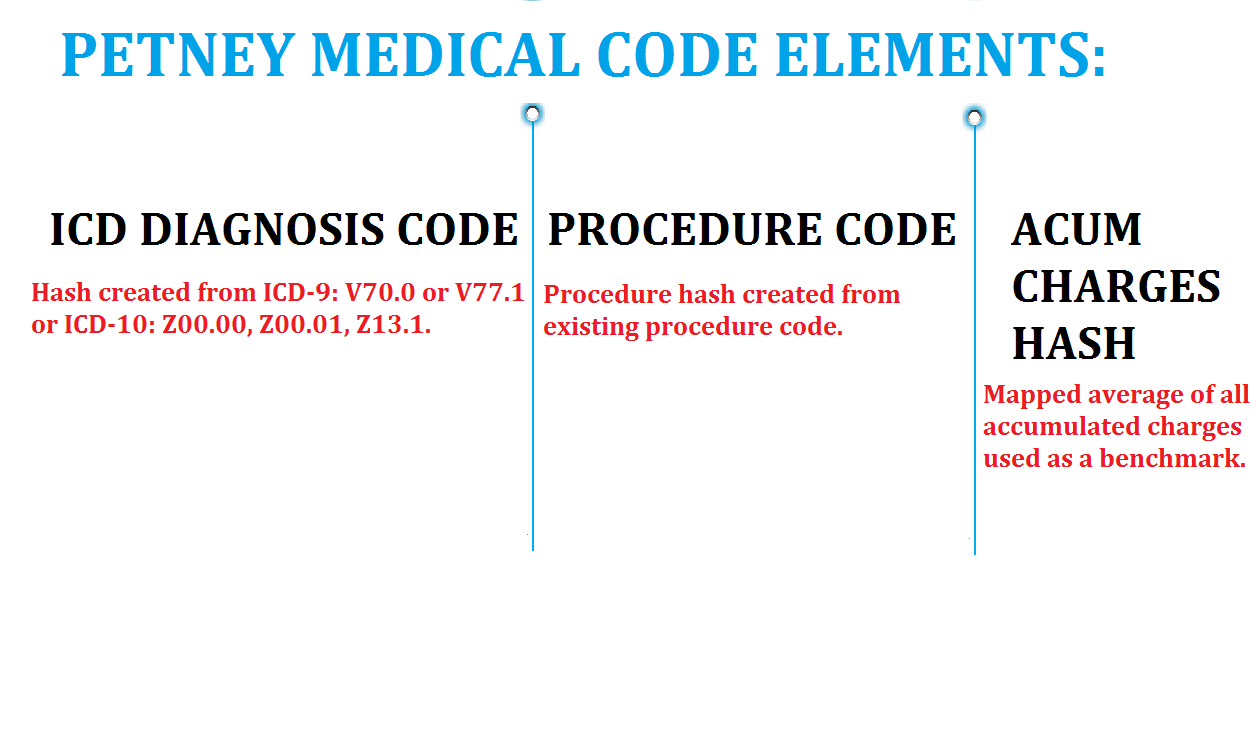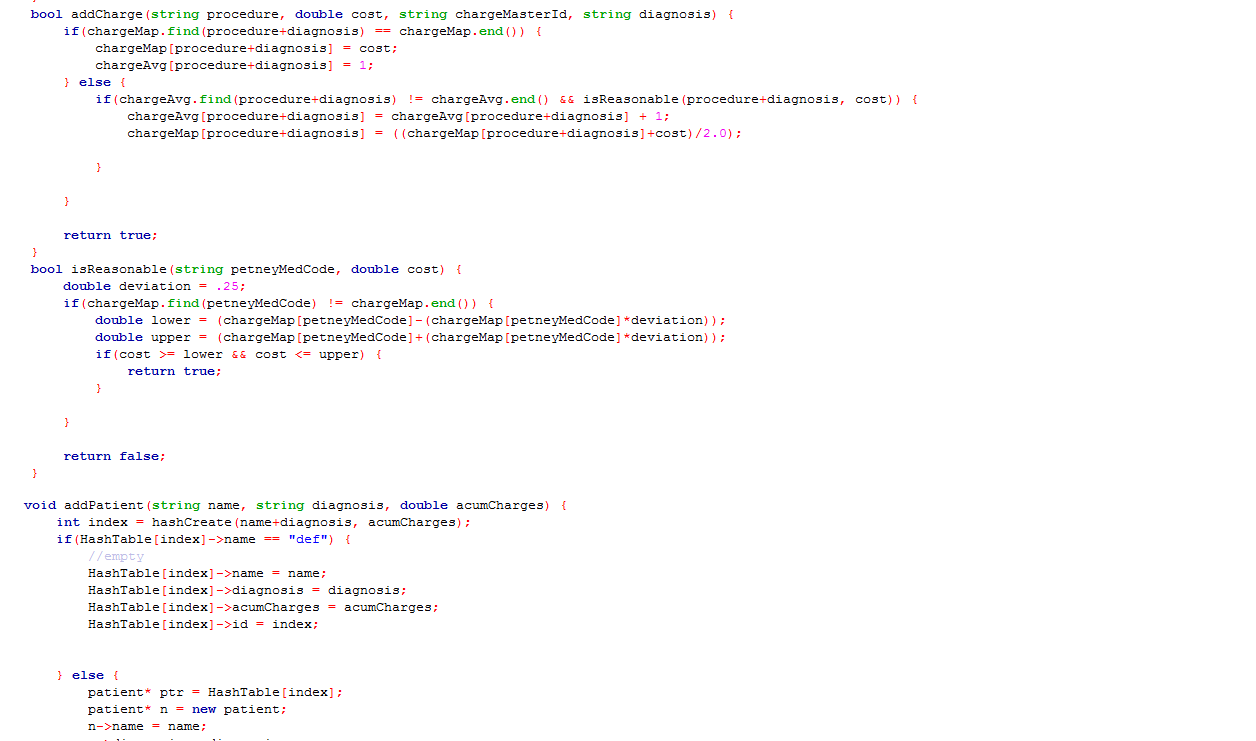Petney Medical Coding System
C++, Hash Tables, Medical coding
Petney Medical Coding System
C++, Hash Tables, Medical coding
Solo Project
Date: 30th Aug 2016 - Present
Software: C++, Standard Template Library
Introduction
The Petney Medical Coding system utilizes a hash table containing a hash map of ICD diagnosis codes, procedure codes, and accumulated average charges to determine charge reasonableness and negate fraud. While taking a Health Care Finance class, I learned about fraudulent medical coding, inconsistent coding, upcoding, and unbundling and decided to develop a medical coding system that would reduce the likelihood of these fraudulent medical coding practices. Similar to file permissions in Linux, which are comprised of the three permissions of read(4), write(2), and execute(1) that can be added together to determine the effective permissions of a file(ex: 4+2=6= read and write on a file for the respective user, group, or other), the Petney Medical Coding system uses a hash table of ICD diagnosis codes and procedure codes to determine the effective/reasonable charge that should be associated with the codes.
C++ program proof of concept
I utilized C++ to make a basic proof of concept of the Petney Medical Coding system that was fundamentally comprised of a charge class, a Petney Medical Hash table class, and a composed patient struct. The charge class contained 2 C++ maps, methods for determining reasonableness, and a constructor to initialize the maps. The first map mapped the Petney Medical Code(string) to the average accumulated charges(double). The second map mapped the Petney Medical Code(string) to the number of accumulated charges(int). Both of these maps worked in conjunction to facilitate the isReasonable method of the charge class that determined charge reasonableness and returned a proper Boolean value.
The Petney Medical Hash table class contained the Hash table of patient pointers, a method to hash a Petney Medical Code from a Diagnosis and Procedure code, a composed charge object, and a linked list in the unlikely scenario of duplicate hashes. The constructor in the Petney Medical Hash table class initialized the Hash table, the patient pointers, and the composed charge object. Also, the class contained methods to add patients and their respective diagnosis and procedure codes to the hash table.
Advantages
- Exisiting Charge Master, Diagnosis code, and procedure code integration- The Petney Medical coding system can be integrated with any charge master and coding system because the Petney Medical coding system creates hashes and averages dynamically based on accumulated charges. The Petney Medical coding system augments existing systems to create a usable fraud protection Medical coding system and is not dependent on a specific version of codes such as ICD-9 or 10.
- Prevent fraud- Prevent medical providers from billing for a more complex procedure than was actually performed by looking at the hash respective to that patient’s diagnosis and procedure. Prevent inflated charges (charges that are inflated by medical providers) by looking at the average accumulated charges and determining reasonableness.
- More Money- Not only does the Petney Medical Coding system prevent fraudulent upcoding but it also prevents down coding. By looking at the upper and lower bounds of the average of accumulated charges for a specific procedure and diagnosis, the Petney Medical coding system can determine if a hospital is cheating itself or has unintentionally submitted a lower charge than it deserves.
Future considerations
In the future, I plan to develop the Petney Medical Operating System from the Linux kernel that will utilize the hash mapping system I developed and be tailored specifically for use with existing medical systems. I aim for the system to eventually eliminate medical fraud, be ubiquitous, and be able to be integrated with any existing medical coding system.
Notable Accomplishments
- Developed a method for preventing medical coding fraud
- Utilized the C++ STL library to create a hash table
- Learned about medical coding and medical coding procedures



